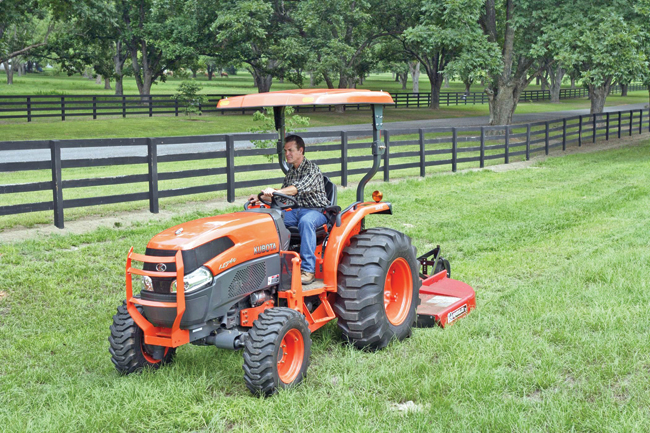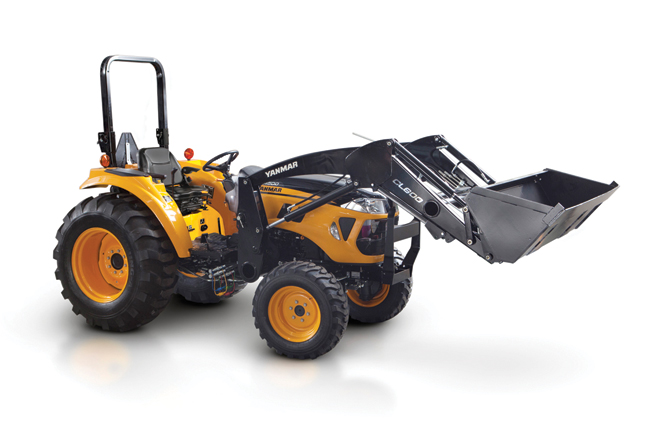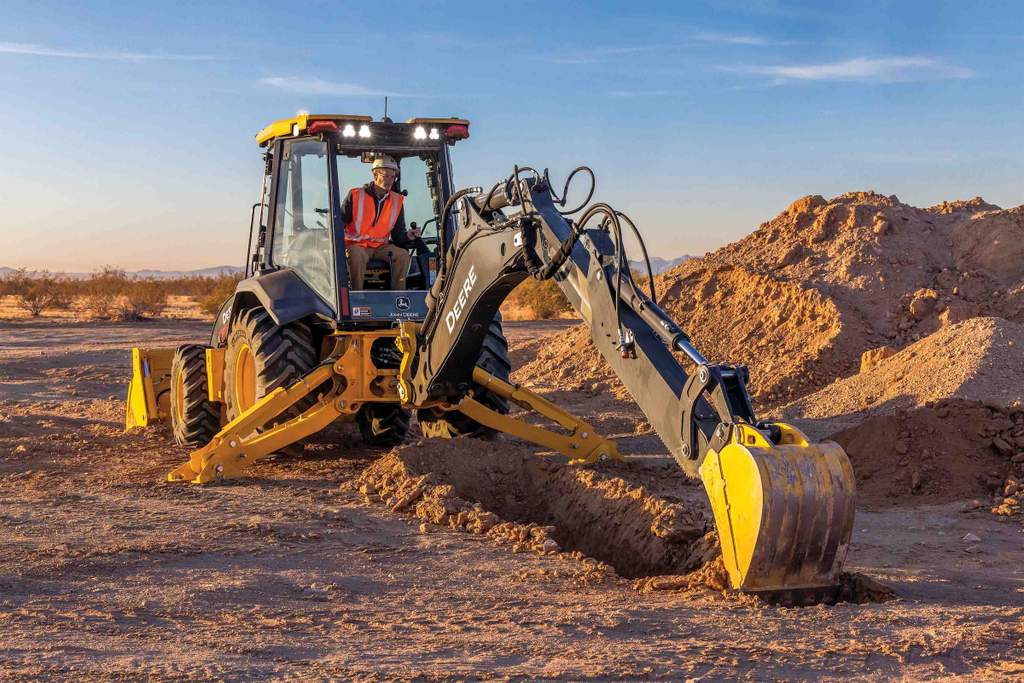Land Rover
The sun’s hanging low in the sky, and its bright red blaze is like a big ticking clock. Time is running short. There are only so many hours in a day to work on your expansive estate, and there are only so many projects you can finish in a week’s worth of work time on a big property. If you’re juggling similarly strenuous grounds keeping projects, a versatile machine like a compact utility tractor can help you or your crews tackle a big to-do list.
Cutting grass, building fence lines, feeding and cleaning horses, grading gravel driveways, plowing snow, digging for drainage — every large piece of land comes with a fair amount of responsibility. Utility tractors (units usually classified under 40 PTO hp) are great for grounds keepers, landscapers, large estate owners and private users with large plots of land who need a machine to help maintain it. Compact tractors are defined by The American Society of Agricultural Engineers (ASAE) as small agricultural tractors equipped with a 540-rpm PTO and a three-point hitch designed for Category 1 implements.

“Compact tractors quickly appeared from 40 hp down through the early 1980s, filling the market gap left by American tractor manufacturers gearing up to meet market demand by the American farmers for larger and higher horsepower Ag tractors,” explains Paul Williams, senior product manager at Kubota Tractor Corp. “Invariably, schools, parks, landscapers, cemeteries, hobby farmers — known as lifestyle families today — all took an immediate liking to these high-production, economical-to-own and user-friendly compact tractors. These general market customers all have one need in common: a compact size machine with a four-wheel drive capability to get more work done.”
Kubota, John Deere, New Holland, Yanmar, Case IH, KIOTI, McCormic, Massey Ferguson, Farm Pro and Mahindra are big brands in the compact utility tractor business. There are hundreds of model choices on the market and unique features galore. Before you start worrying about brand, you will first need to figure out what you want this chore tractor to do. Once you zero in on your weekly applications, then you can start to determine the right size tractor and the number of attachments.
First off: What will be your major jobs around the property? Mowing grass? Cleaning horse stalls? Transporting mulch? Will you lift into high places? Will you be carrying heavy materials often? Will you plow snow? How quickly do you need all of this finished each week?
Secondly: How big is your jobsite? Are there many tight areas? Lots of hills? Big, open pastures? Will you need to go through gates? Will you need four-wheel drive?
And lastly: How big is your storage area? Is it a barn or garage? How wide is the entrance? How high are the ceilings? Where will you store it in the winter?
This should help you to begin to determine the dimensions of your ideal machine. Your applications will specifically help you determine your attachment selection and various other options (from transmissions to tires), but let’s not forget about comfort and ease of operation. These are two qualities that private users and large estate owners hold in high regard when it comes to equipment. The comfort of the operator’s station, the ease of maintenance and the simplicity of the tractor will be of utmost importance.
Creature comforts are much like the ones you would find in your car — a nice comfortable seat, large automotive style dashes, user-friendly color-coded controls and easy entrance and exit from the operator station. Of course, to experience the comfort and ease of operation of a unit, you must give it a demo ride (and if possible, use it in applications that you will be using on your estate).
Start off with the seat — is it comfy and adjustable? Now sit back on the tractor and get a feel for the controls. Key questions to ask yourself: Do I have enough leg room? Are controls such as loader joysticks, transmission levers and PTO engagement levers within comfortable reach? Is this a flat platform or will my legs be straddling something for long periods of time? Can I clearly see the implements (front and rear)? Implements overall are extremely important.
“Far and away, the front end loader is the most popular attachment for a compact tractor and the one which revolutionized its use,” says Joel Hicks, technical support supervisor with KIOTI Tractors. “Most who own a compact tractor today can’t imagine what it was like to own a tractor without a loader in the past. Other popular front-end attachments include brooms, blades and front-end snow blowers. Other rear-mounted implements include mowers, box rakes, augers, backhoes and seeders.”

Always make sure to check the ease of routine maintenance. The customer should be looking for a unit that allows for easy, simple and full access to any service points. A one-piece flip up hood is always a plus. Access to the oil dipstick, oil fill, air cleaner and battery are essential. Since the operator’s manual doesn’t always stay with the tractor, a maintenance sticker under the hood and well-marked service points are useful. Last, but not least, concern should be given to unprotected tie rods or grease zerks.
Most compact tractors today are sold with a loader on the front (typically in a package deal) and most range in the 25 to 30 PTO hp (units are categorized by PTO hp, not engine horsepower). Every owner and operator is different, so to determine your specific needs and options (implements, transmission, tires, engines and everything else), surf over to www.ceunbound.com. To view some of the latest models of tractors on the market, read over the next two pages.
Keith Gribbins is managing editor of Compact Equipment, based in Peninsula, Ohio.




